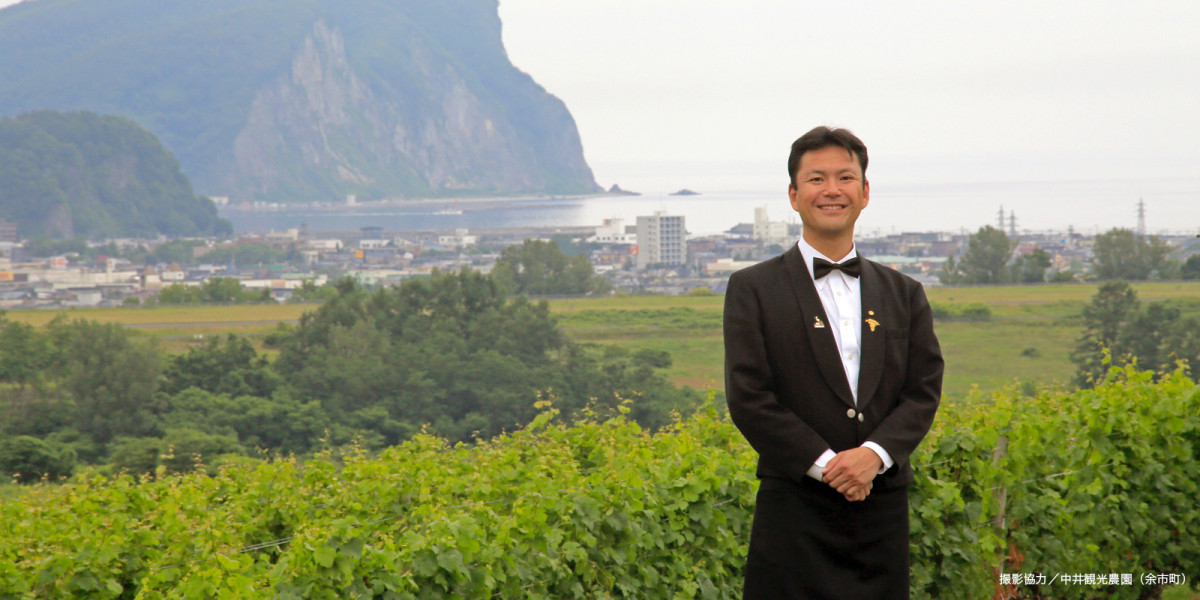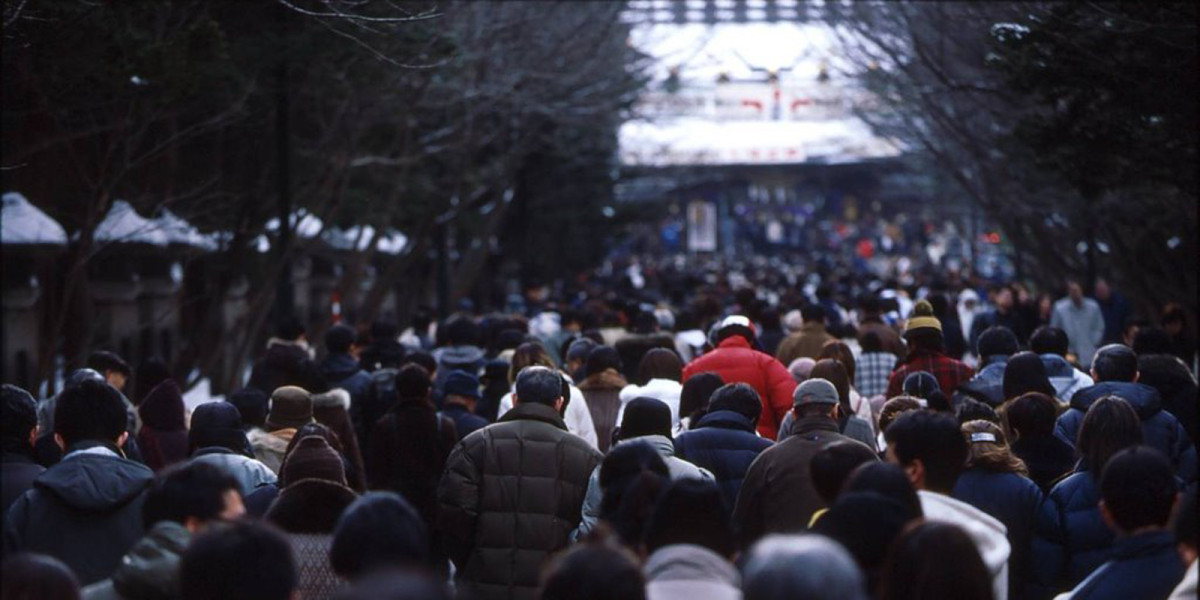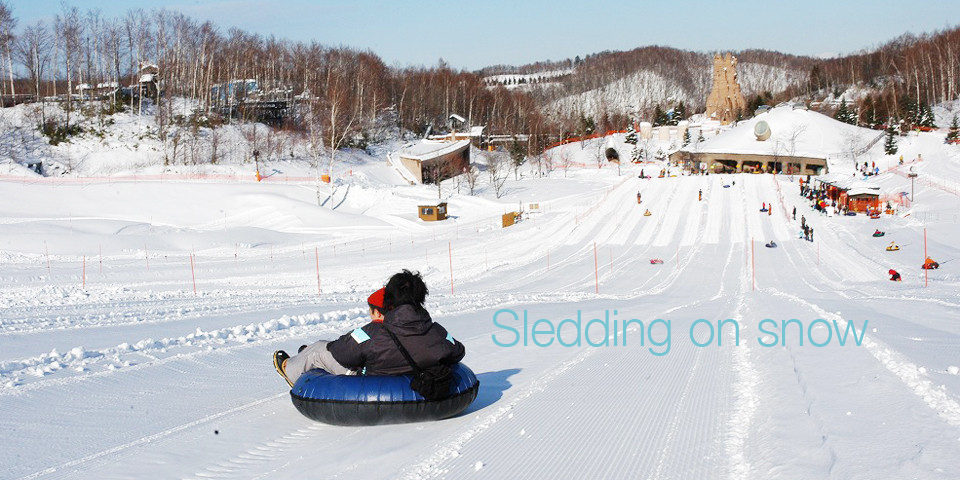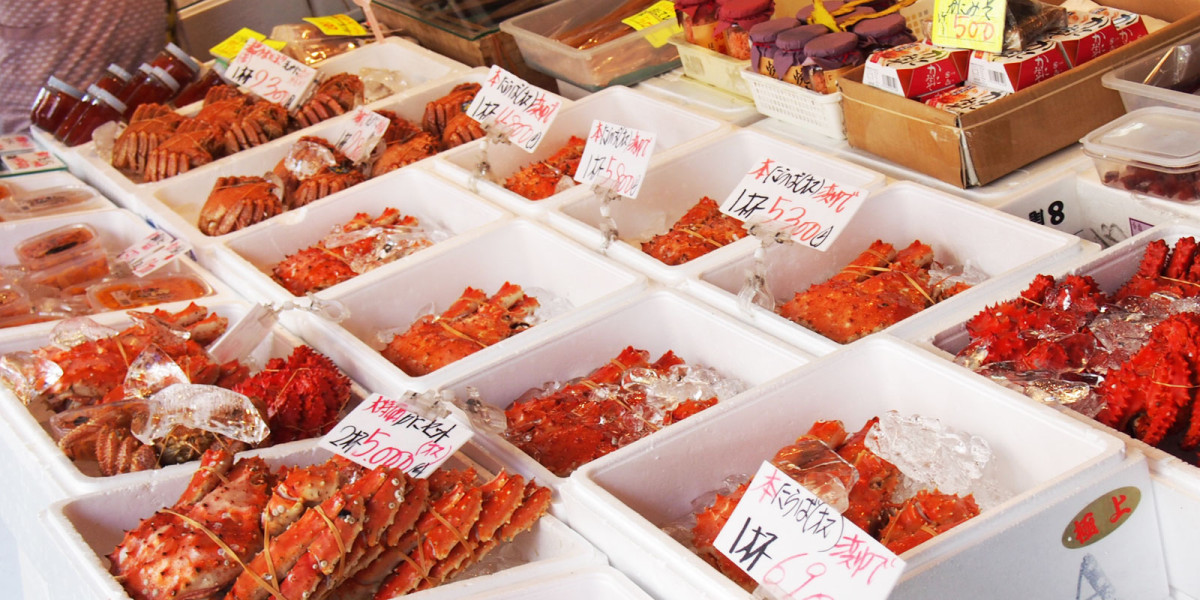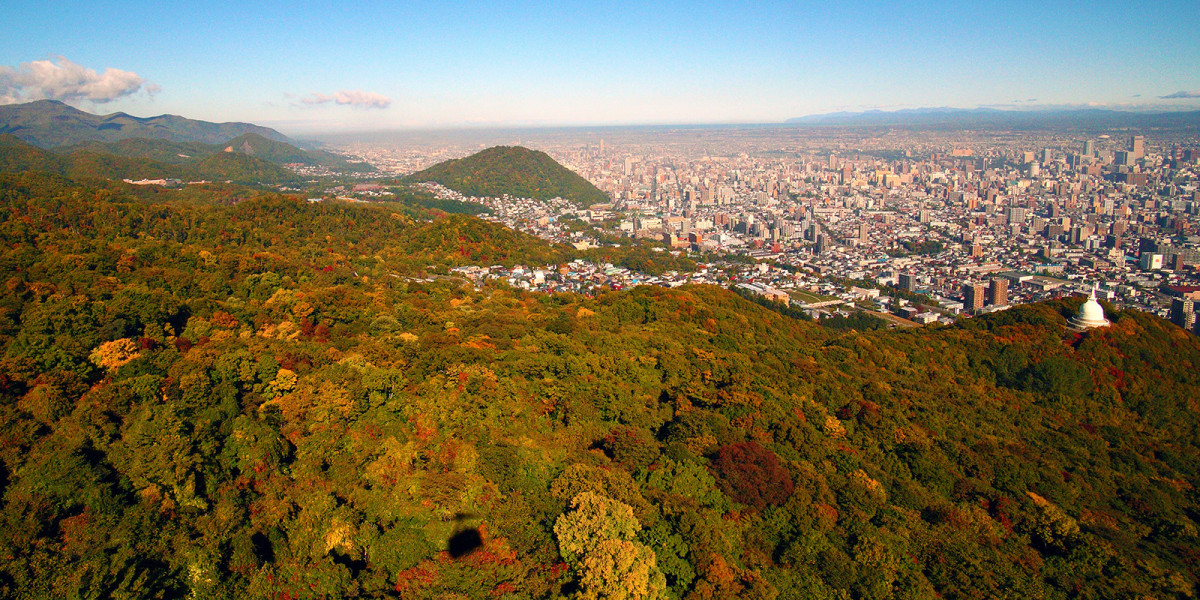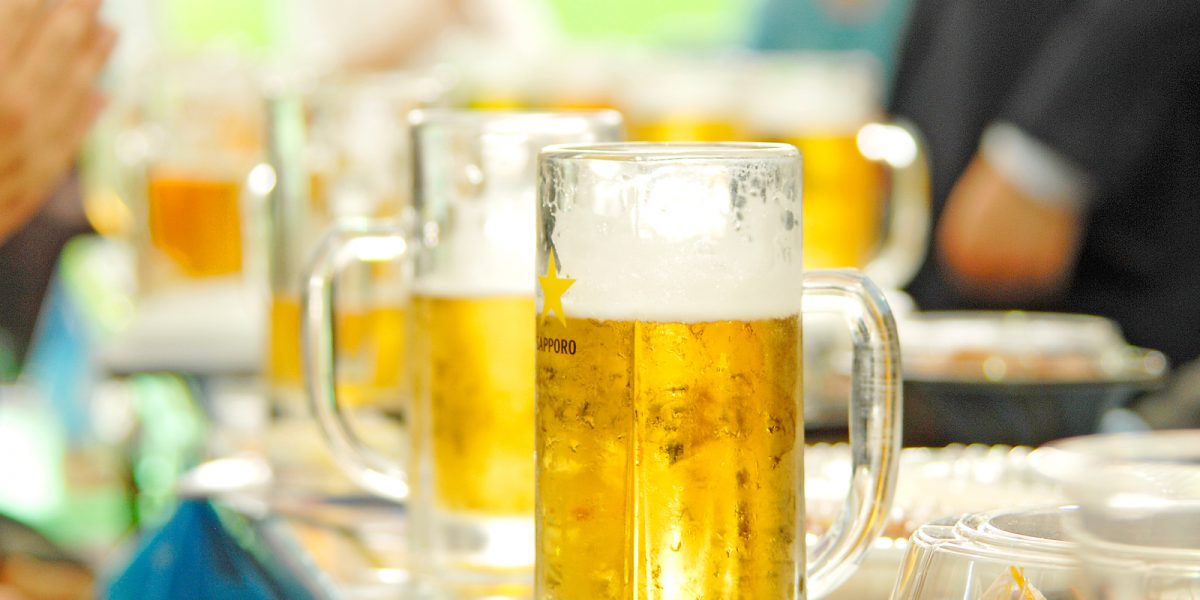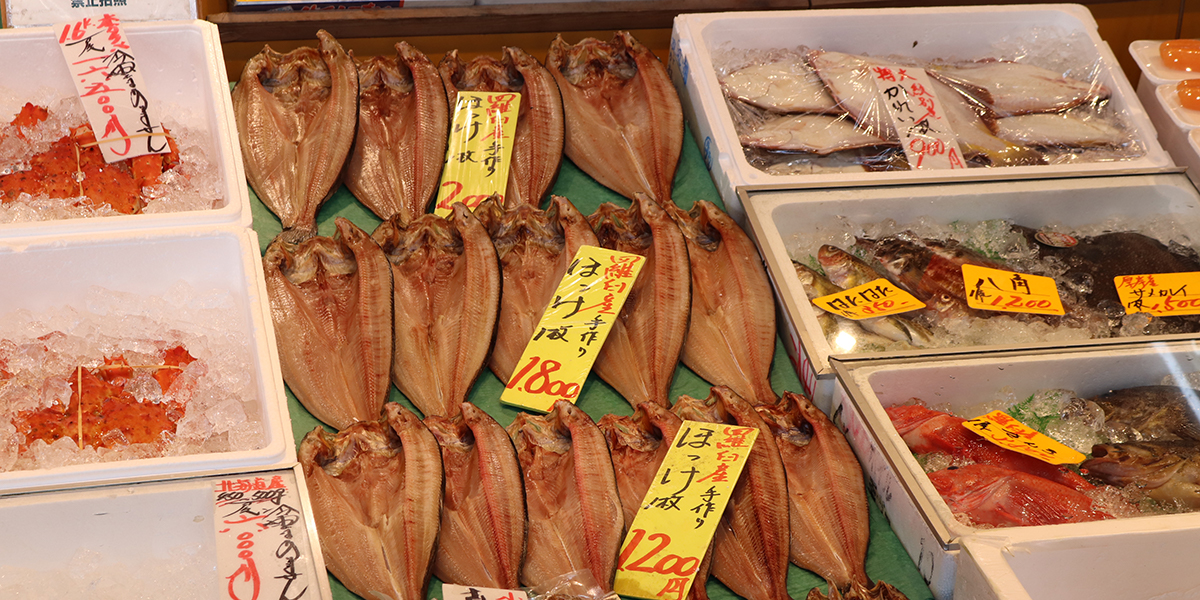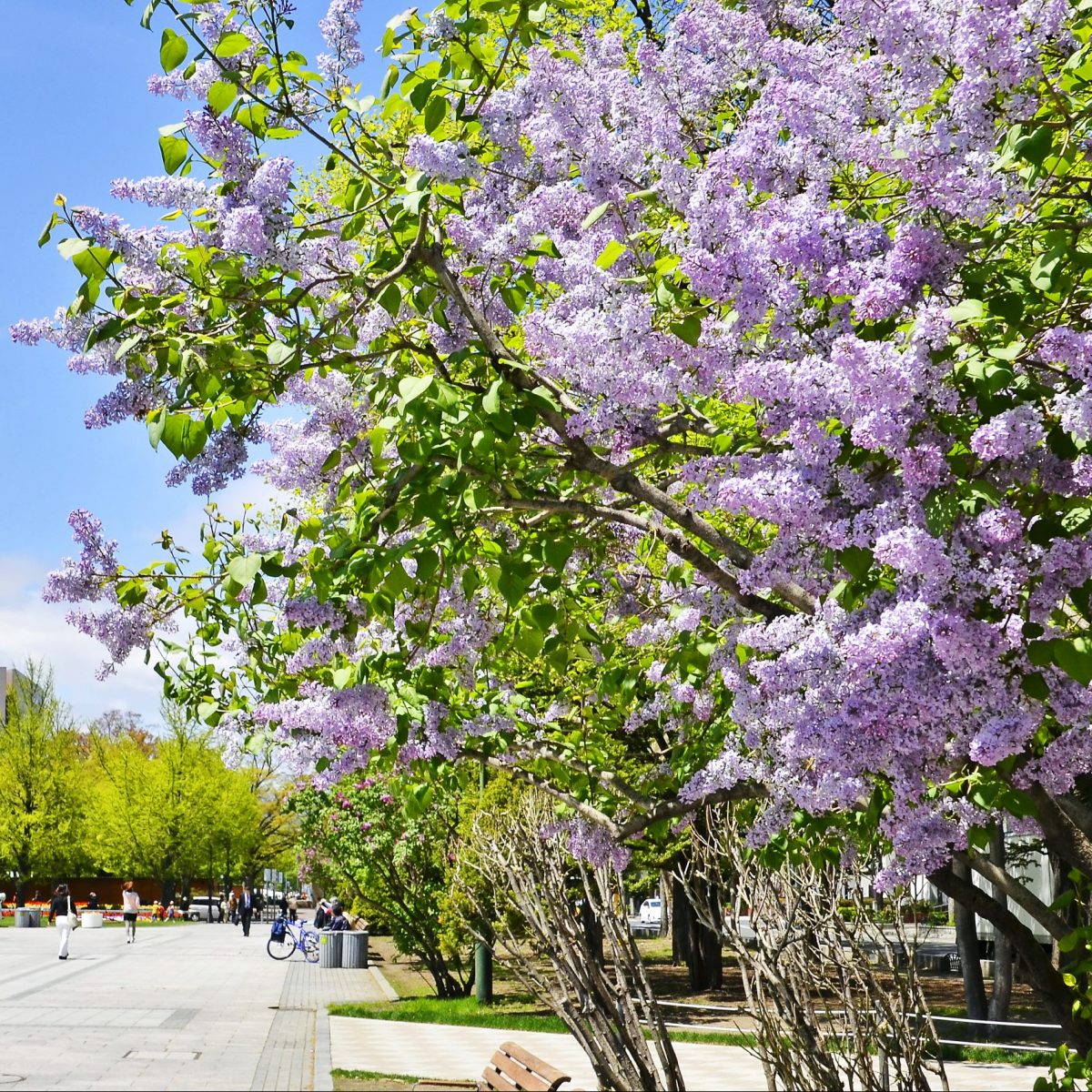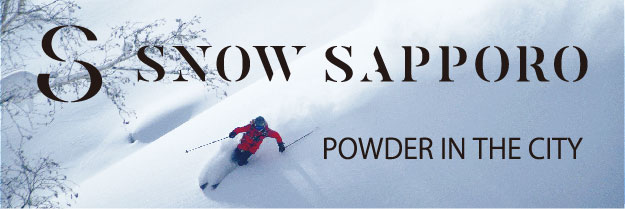I want to connect Hokkaido’s food and tourism by establishing wine tourism with Otaru as its port. Hokkaido Wine Center’s senior sommelier, Masahisa Abe
Hokkaido is a wine producing region, and the number of wineries is fast on the rise, spurred by the pioneering spirit that has taken root in this land of wide expanses and cool climate. We learned about the appeal of wine tourism from the founder of the Hokkaido Wine Center in Otaru, Masahisa Abe, who has brought to Hokkaido a new culture that connects wine, food, and travel.
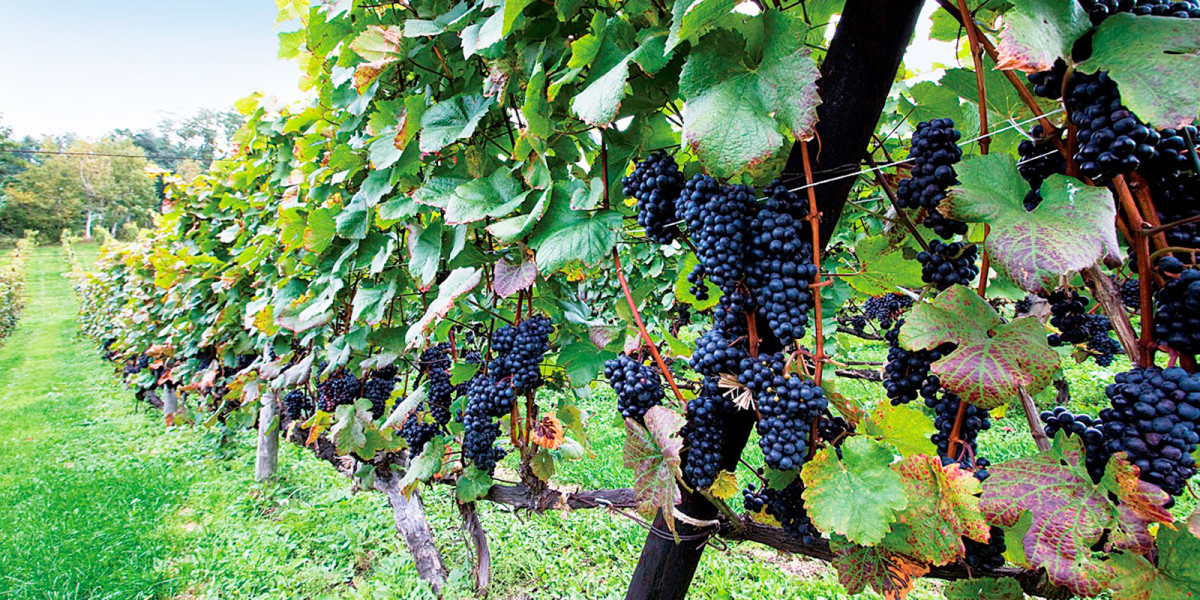
In the know about Hokkaido’s wineries
If you take a drive through the rural areas of towns like Yoichi, Niki, or Urausu, you will encounter the enchanting scenery of grape vineyards. In fact, Hokkaido is the region in Japan with the largest wine grape production. It is also a wine-producing region with an increasing number of wineries. The region’s wine production is characterized by a larger quantity of white wine, which uses varieties of grapes that fare well in cooler climates.
“The charm of Hokkaido’s wines is in their full-bodied aroma. Hokkaido’s climate concentrates each distinctive aroma into each type of grape, in such a way that the grapes can be brewed into a variety of flavors and colors you would not believe could come from a white wine. For example, you can taste the minerals from the earth in Sorachi wine, a hard wine with a crisp finish. In contrast, the warm breeze from the west and winter snow in Shiribeshi increases the sweetness of its wine grapes, giving Shiribeshi wine a soft, fruity palate. The aromatic scent and sweetness that stand out in these wines are appealing because they are different from wines produced in other parts of the world.”
*Sorachi and Shiribeshi are the main wine grape producing regions in Hokkaido.
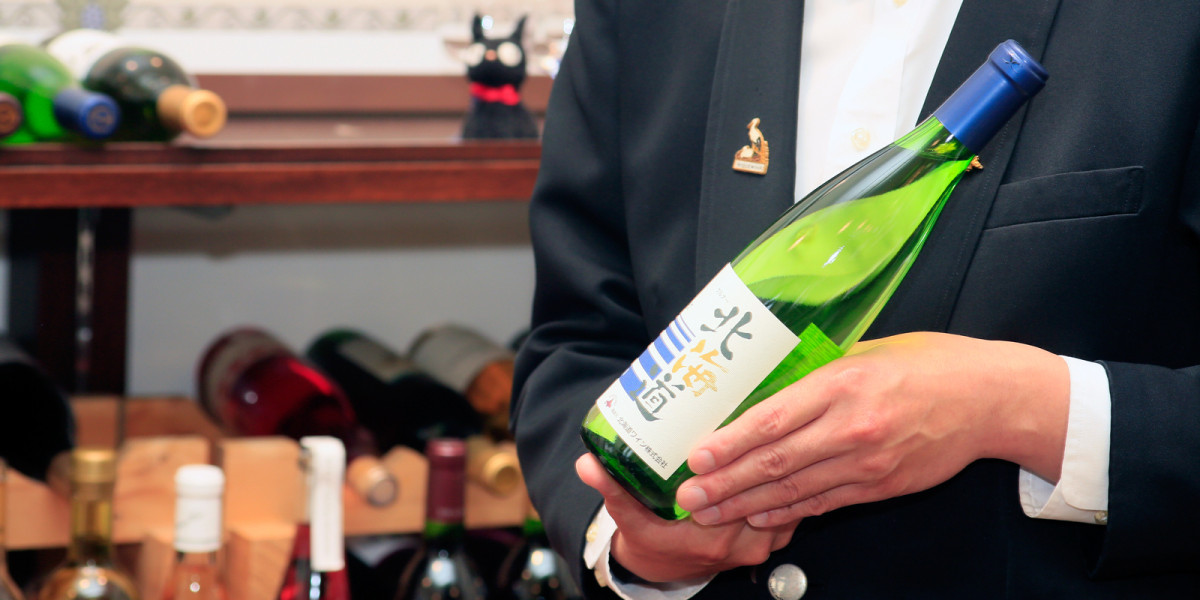
Promoting Hokkaido’s wines from the tourist town of Otaru
Hokkaido wine traces its beginnings to wine brewed from mountain grapes in 1963, during a time when there were yet no wineries or wine grapes grown in the region. Since then, the region has matured into a wine-producing region of genuine Hokkaido Wine brewed from local ingredients, achieved through the efforts of farms that succeeded in growing European grapes and wineries that perfected their brewing technology. In 2000, Abe, who at the time was working as a sommelier in Sendai, became enamored with Hokkaido wine before it had even come into the spotlight, and moved to Hokkaido to take a chance exploring its potential. After gaining experience working for a winery, he founded his own enterprise in 2013, the nonprofit organization Winecluster Hokkaido. In 2015, his organization established the Hokkaido Wine Center, which passes on information about wine from the tourist town of Otaru.
“I think Hokkaido’s wines gain value not by traveling around the world as export items, but by bringing travelers to the region to appreciate the wine along with the local food and climate. This is why the Hokkaido Wine Center passes on stories about the region during the wine tasting at the “Wine Tasting Adventure” seminar. The characteristics of Hokkaido’s climate and natural features, knowledge of how best to combine Hokkaido ingredients, and the stories of the farm families and wine manufacturers all bring a deeper flavor to the wine experience.”
Creating a new Hokkaido culture through wine tourism
One characteristic of Hokkaido’s vineyards is that they are cultivated hedging-style, so that large machinery can pass through. Once you know how grapes are cultivated in Hokkaido—such as how they are planted on an incline ahead of time to keep their branches from breaking from snow pileup, or how they are protected from the cold air by using snow cover to maintain the temperature—the flavors of northern region wines become even more significant. By promoting the region’s charms through Hokkaido wine, senior sommelier Abe has now taken on a role like that of an ambassador for tourism.
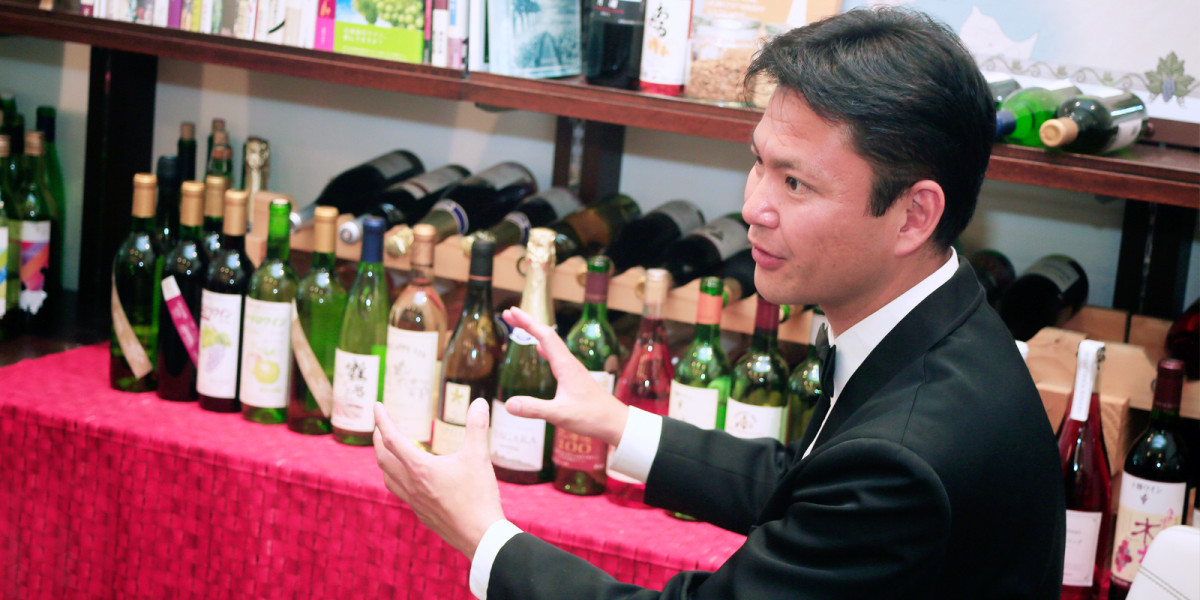
“What I want to invest my energy from now on is wine tourism, with Otaru as its port. This is because I want travelers who come to Otaru to have their fill of Hokkaido by enjoying the sights and tastes of this region called Shiribeshi. The Shiribeshi area of Otaru is a place in which all the appealing aspects of Hokkaido are condensed, from its specialty goods to the recreation activities available in its ocean and mountains. In the future, I would really like to gain certification in the travel industry and organize “wine tourism” tours. I want to establish a new food culture by using the opportunities wine offers to connect food and sightseeing.”
Using a global outlook to find local appeal—these “glocal” discoveries are important, says Abe. It is not just about pursuing a global wine culture, but rather shaping an original wine culture that could only be made possible in Hokkaido. Delicious wines and newfound delights await you at your travel destination, made all the more impressionable because these are yet to be discovered. Cheers to you finding your own special wine on your next Hokkaido journey!
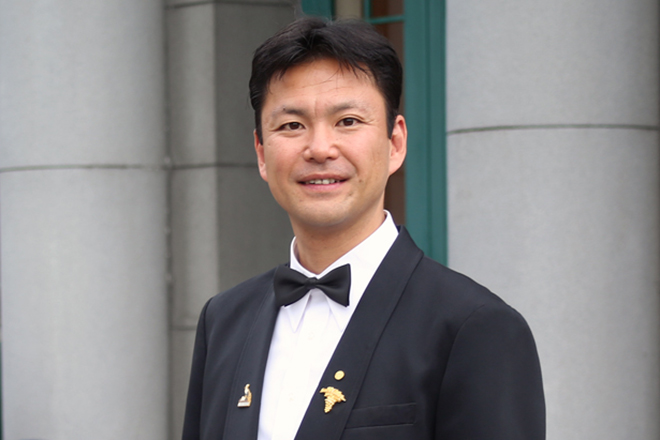
Masahisa Abe
Nonprofit organization Winecluster Hokkaido
Senior sommelier, Hokkaido food-meister, and master of Hokkaido cuisine
Born in Sendai City in 1974. While working as a hotel employee in 1997, he became the youngest person to pass the sommelier certification authorized by the Japan Sommelier Association. He felt drawn to Hokkaido as a wine producing region and saw wine’s potential to connect food and travel, which prompted him to change his job to join Hokkaido Wine Co., Ltd. He then moved to Hokkaido. In 2005, he gained certification as a senior sommelier and was recognized as a “master of Hokkaido cuisine” by the prefectural government. From 2009, Abe has focused his energy in building a local Hokkaido wine culture while serving as the executive director of the Hokkaido Wine Tourism Promotion Council, which was founded through a public-private partnership. After earning his MBA degree from the Otaru University of Commerce, he established the nonprofit organization Winecluster Hokkaido in 2013. In 2015, he started a new enterprise, the Hokkaido Wine Center.

